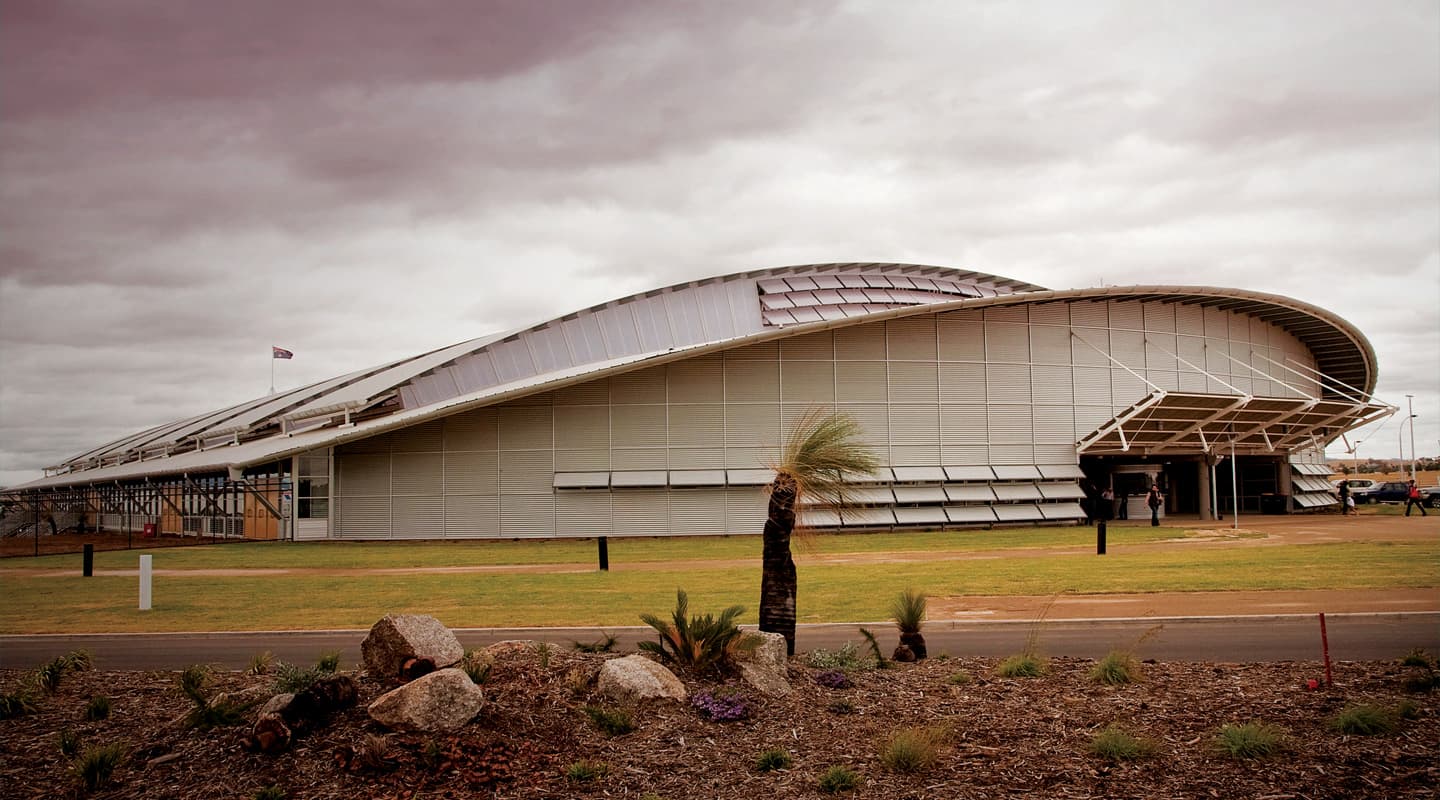
Equine Affluenza
The Australian Equine & Livestock Events Centre’s audio visual setup looks like a whinnying combination.
Text:/ Brad Watts
Photos:/ Lou Farina
At a cost of $30m, the Australian Equine & Livestock Events Centre (AELEC) in Tamworth is a big, gleaming circus maximus for rodeos and high-stepping, primped and preened horse flesh. An entire decade in the making, the government project is built like a giant horseshoe with outer buildings ringing the stadium.
Located on the southern approach to the country music capital, almost in the shadow of the fabled giant golden guitar, the stadium is designed on two levels and features an 40m x 80m indoor arena with tiered seating for 3360 people. The site occupies a total of 22 hectares that encompass a concourse area for exhibitions and trade shows, a mezzanine area, including VIP lounges, cafés, a kiosk, events office, a broadcast and judges’ box. There’s a further 20 hectares of parking and ultimately the indoor area will comfortably seat a total of 5000 (humans), with stables capable of housing 700 horses – beware the stampede if they all at once decide to pop out for some takeaway chaff.
FOALED-ED HORN – THE SPEC
Audio Product Group was initially approached to supply and install a public address system, background music and emergency announcement (EWIS) systems. The very landscape of AELEC, with both large indoor and outdoor areas, required sound reinforcement with minimal audio spillage. Control was achieved using 36 x TOA HX-5 series compact array speakers to create even SPLs throughout the centre.
In addition, 42 x TOA BS1030B two-way boxes, 46 x TOA CS154 15W outdoor music horns, three x 6W CS64 outdoor music horns and 10 x TOA 15W two-way ceiling speakers cover the area.
To further meet the requirements of even and sustained sound levels, two Biamp AudiaFlex digital sound processor systems with audio I/O and CobraNet cards were the perfect choice. The Biamp AudiaFlex DSP system meant that level matching, frequency response and sound pressure levels were easily controllable. Other supporting Biamp products include three NPS-1 Network Paging Stations together with I/O expander cards.
A total of nine TOA digital amplifiers, providing 36 channels of 250W and 500W outputs were required. To avoid extended microphone cable runs, Biamp’s Cat5-based NPS-1 Network Paging Stations were selected.
The project also called for four AKG rackmount receivers (SR4000V) and matching HT4000V50 transmitters with an AKG-managed antenna system. Eight TOA Electret condenser handheld microphones, together with four matching TOA WT4820 16-channel dual tuner frames and six AKG CHM21 hanging microphones were also used.
An AMX touch control system wrangled what was potentially a very complex system with its multitude of inputs, zones and options.
“”
We had surprisingly few problems with reverberation and echo
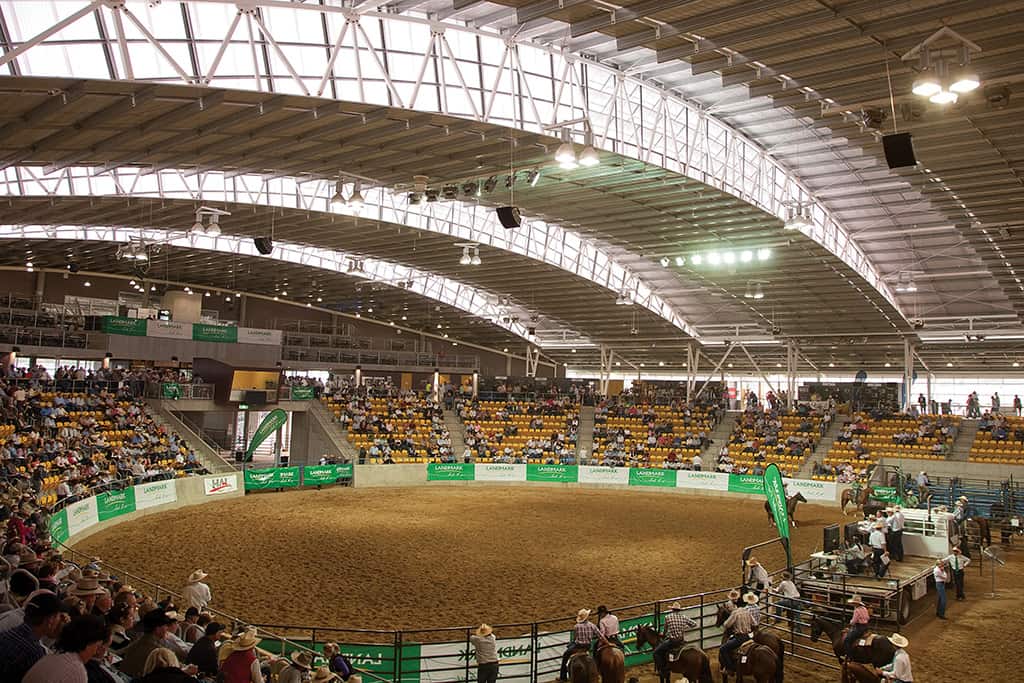
Exterior and interior of the main arena of the Australian Equine & Livestock Events Centre
HORSES FOR COURSES
After going out to tender the installation job was given to local AV outfit, Soundys, headed up by Scott Day. Scott divulged to AV some of the intricacies of the project – a commission beginning in February and completed in October of 2008.
SD: We were commissioned to supply and install. Originally the job had already been specified and modelled. The system was more inclined toward public address duties and background music rather than sound reinforcement. The main concern was getting coverage over the entire site and getting the zoning right.
SC: Everything is controlled via Biamp Audia systems, but because of the distances around the arena we’ve had to use 100V lines for everything – so that’s when we went for the TOA arrays.
AV: So why go for the TOA equipment?
SD: The system had to be a high impedance arrangement purely because of the distances involved – in some cases up to 600 metres at the extremes, but generally we were looking at distances of around 350 metres from the amplification to the main HX5As and BS1030Bs in the Main Arena.
So a powered system simply wasn’t going to work in the building. Add to that the fact that the structure didn’t have a lot of infrastructure for cabling… and the TOA HX5A was the best option for dispersion anyway. Because the arrays disperse directly into the seating areas we had surprisingly few problems with reverberation and echo. Any minor issues with reverberation are obviously reduced as the Main Arena fills with patrons – especially given the fact that the arrays are faced directly toward them. So as far as delaying signals we really had an easy job of it. The main arena actually uses no delay lines whatsoever. The only delays we use are for speakers in other zones – areas that are away from the arena itself.
AV: So what’s the backbone controlling system, and where were the individual boxes placed?
SD: There is an AMX system that runs everything from the main judging box. We also have the Biamp systems set up with the daVinci software that allows complete control of the system. There’s actually multiple locations where the systems are housed. There’s the indoor area which supplies the arena, and there’s also an outdoor system, where we have further Biamp systems hooked into the main system via optic fibre down to a stable that houses the amplification. That equipment then feeds to all the stables and the Camp Draft Arena and all the outdoor warm-up areas and the parking areas.
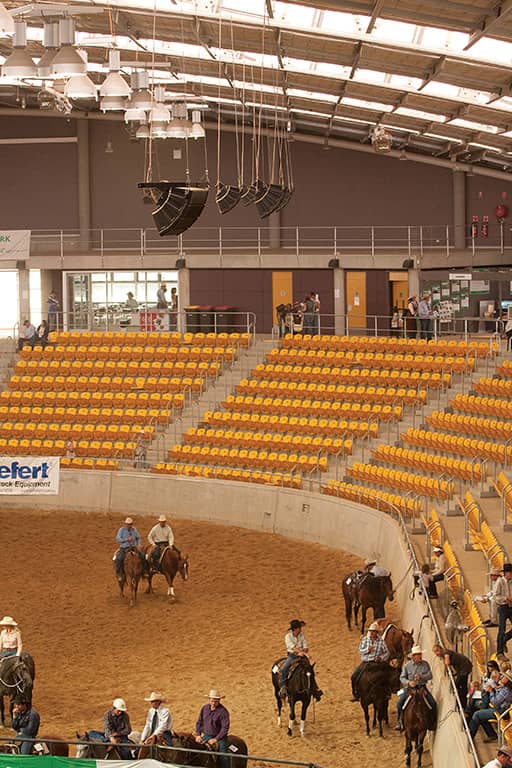
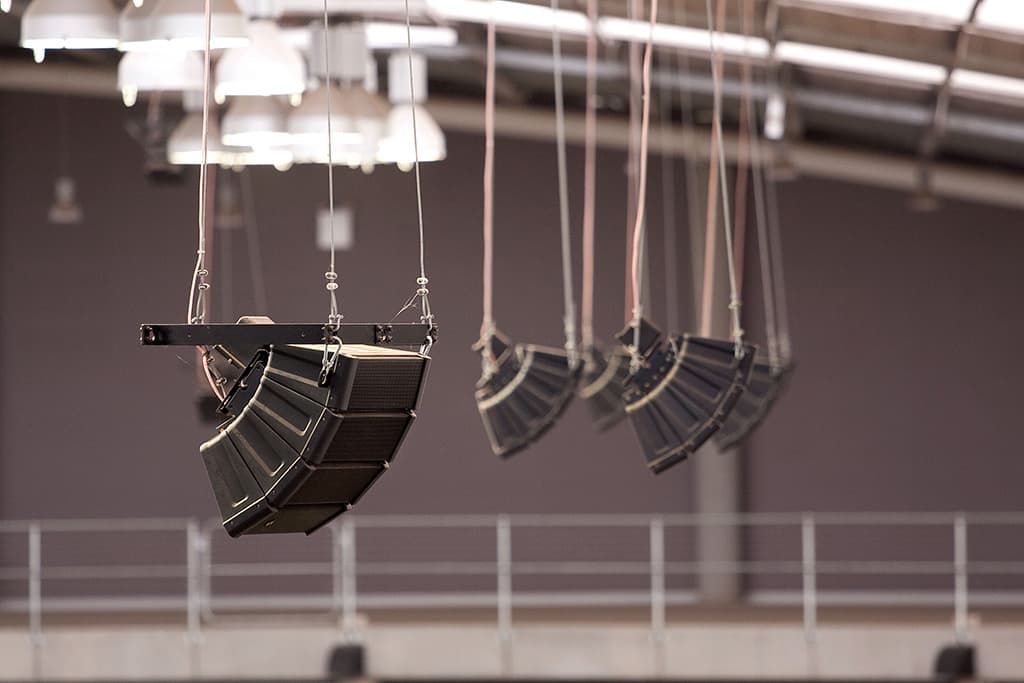
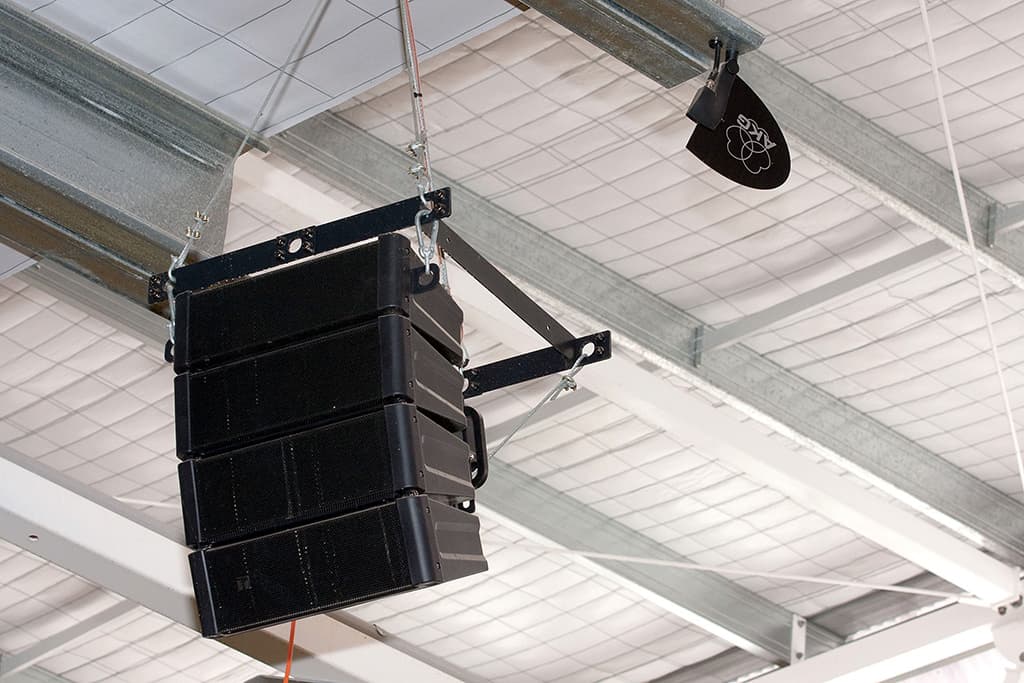
The TOA HX5A units were primarily deployed in the main arena along with the Sales Arena annex. The Sales Arena has seating for 560 people and is used for demonstrations and, as the name would suggest, auctions for livestock so you can imagine that area gets pretty noisy at times.
The two-way BS1030B units were chosen for additional coverage in the Main Arena, both flown and beneath the seating. These were also used throughout the concourse area. The Main Arena required the use of four AKG CHM21 mics that were used for ambient noise level measurements. Another two CHM21s were used for ambient noise metering in the VIP area and another in the mezzanine. Smaller flushmount speakers like the CS154 15W units were deployed in the car parking areas, the warmup areas and throughout the amenities sections of the complex. Then within the rodeo shoots are further 6W CS64 flushmount speakers to let those guys know what’s going on before they’re released from the shoot. Not that I’d reckon they’re listening to much at the time!
AV: Obviously there’d have to be issues with heat and dust in such an environment. Did this sway any of your supply decisions?
SD: Definitely. Many of the speakers were chosen for their ability to stand up to the dust, and a lot of the outdoor speakers have to withstand weather and UV radiation. So a lot of the TOA equipment was chosen for those environmental factors. It’s brilliant gear when it comes to standing up to harsh conditions. The TOA amps such as the DA500 and DA250 digital amplifiers are great, in that they’ll fit into cramped conditions and put out a lot less heat.


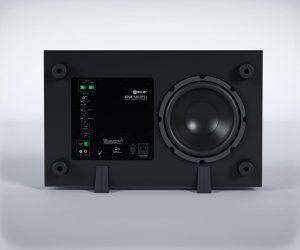


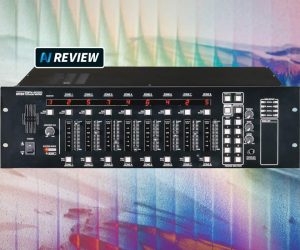


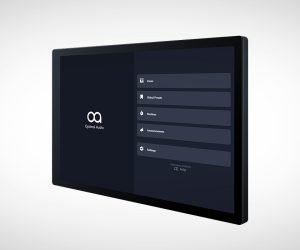
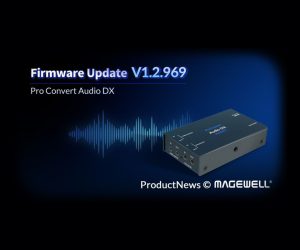
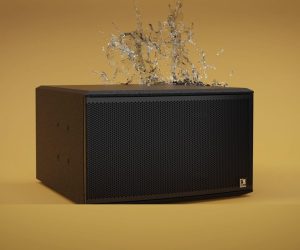




RESPONSES